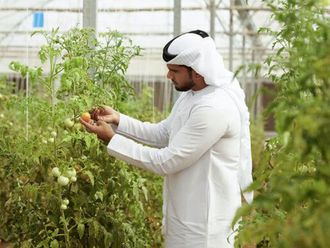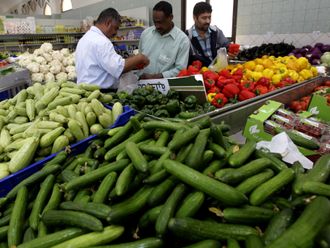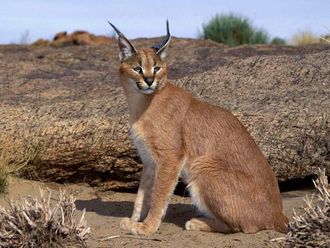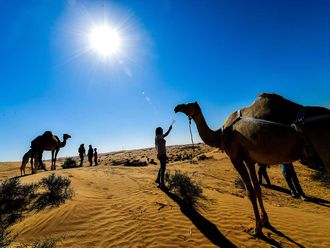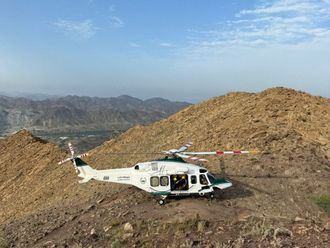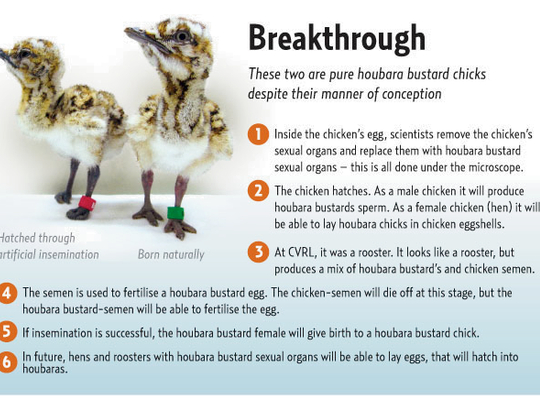
Dubai: The threatened houbara bustard, the ultimate quarry of falconers, has been given a new lease of life thanks to the humble chicken.
Implanted with houbara bustard germ cells at ‘egg stage' in a feat somewhat reminiscent of science fiction, the rooster, complete with red comb and other chicken-like characteristics, is able to produce houbara bustard semen.
Avian species with which this can be done are scientifically called chimeric, as they host another bird's cells. The semen from the chimeric rooster is then used to artificially inseminate a female houbara bustard to produce pure houbara bustard chicks.
In captivity this means the houbara, which is usually a seasonal breeder, can be bred year-round, alleviating pressure on the wild populations that are dwindling due to habitat loss and hunting.
Years in the making
Dr Ulrich Wernery, scientific director of the Central Veterinary Research Laboratory (CVRL) in Dubai, has been working with his team on this cutting-edge technique for the past eight years. In the future, CVRL hopes to breed houbara bustards from chimera hens and roosters, but more research is required.
"Houbara bustards are quite difficult to breed. There are several projects in the region to breed them but we wanted to find a different, not a natural way, to breed them," said Wernery. "Houbara bustards are far from the chicken but their cells can settle in them."
Houbara bustards range across North Africa, the Middle East and western Asia and breed from December to March, when the climate is temperate in these regions. If the weather is too hot or too cold, male houbara bustards do not produce sperm.
"Breeding programmes here provide the birds with air-conditioned rooms to prolong the breeding season. With artificial insemination we will be able to prolong this for much longer," said Wernery. "If this technique is available, in a number of years we can keep endangered species from going extinct."
Birds are difficult to clone, said Wernery, so this advanced germ-stem implantation is a great success. "Houbara bustards are on the decline. We would like to breed them to support falconers. Captive breeding will help recover the numbers being hunted in the wild," said Wernery.
According to scientists at CVRL, their houbara bustard chick hatched on March 21 after about 23 days, in line with the normal incubation period of 22 to 24 days.
To protect the eggs of houbara bustards, several trials were done with ducks, guinea fowl and quails over the years. Ducklings were successfully hatched from a chimeric chicken and duck hen. Several groups in the UAE release captive-bred houbara bustards into the wild.
Most recently, 70 were released in the western region in January, after being raised at the National Avian Research Centre of the International Fund for Houbara Conservation.



